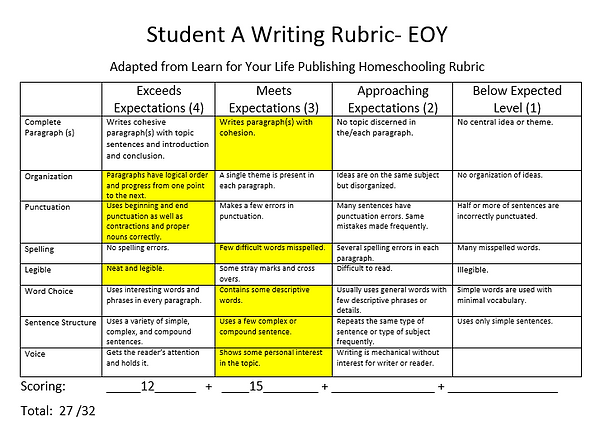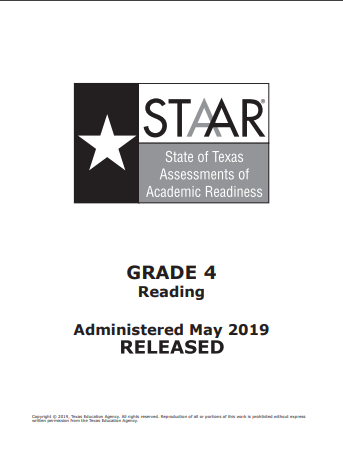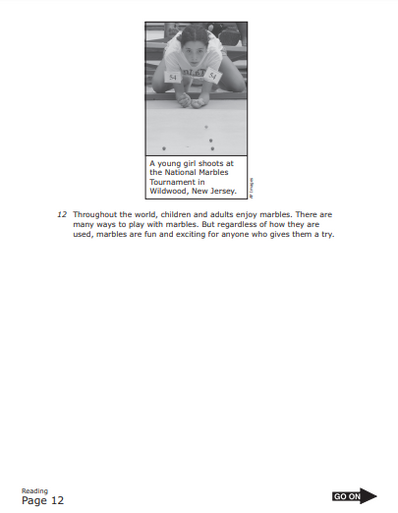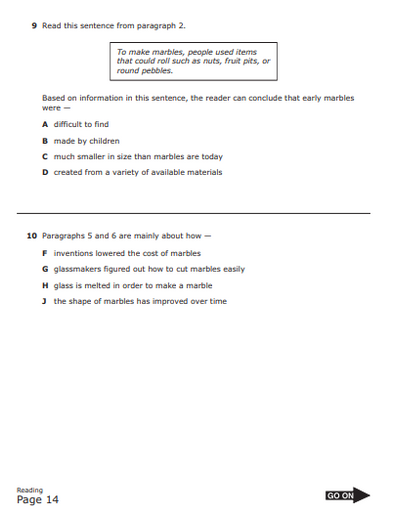Dramatic Academic Growth
Academic gains are the ultimate door opener – they are the foundation of a truly transformational teacher. Students make dramatic levels of academic growth (that is measurable and rigorous). Families know the level of rigor necessary for college and career readiness in the 21st century.
Introduction
Academic improvement and gain is the indication of an individual's intellectual growth. This development is key for college and career readiness, which allows students to compete in a complex society. Transformational educators know that academic growth opens doors for students academically and personally. It is up to the educator to create partnership with students' families, guardians, and spheres of influence to support in unison the rigor required to help students reach the autonomy to participate in the 21st century.
Our daily learning, practice, and assessment ultimately gives vision to our learning and alignment to state standards that will prepare students for the future. Daily work creates an environment that can produce dramatic growth. Gains can be categorized into two varying branches- quantitative and qualitative. Quantitative gains can be pinpointed through improved numerical performance on standardized assessments or teacher developed assessment. Qualitative gain shows the progression of growth over time- most notable in writing. By assessing gains in a variety of ways, transformational educators have tangible evidence of their profound impact on their students academically.
All images are available in the public domain.
Table
of Contents
Standardized Assessment
Running Records
Running Records from Reading A-Z are a widely accepted assessment utilized all over the country to determine students reading levels. The assessment aligns to Common Core Standards and individual state standards. The evaluation is given as Beginning of Year, Middle of Year, and End of Year (BOY, MOY, and EOY) assessment on my campus. Running Records identify three major reading components: fluency, accuracy, and comprehension. The running record itself requires the student to read aloud a leveled passage, while the educator documents errors. Errors consist of substituting another word for a word explicitly in the text, omitting a word, inserting a word, skipping a word, and teacher assistance with reading a word. After the running record, students summarize the text and answer comprehension questions. The questions assess vocabulary, inferencing, identifying key details, analyzing relationships. and evaluating. Campus wide goals are set for students to increase one reading level per semester. Therefor, each students' yearly goal is to grow two reading levels no matter their starting point. The following data reflects all of fourth grade where I am the sole departmentalized reading educator.


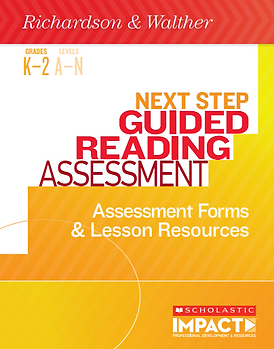
4th Grade Reading Levels - U,V, and W
1.66% of students entered 4th Grade on grade level.
Running Record Breakdown
Level U- On Grade Level



Example of a passage students will read aloud, while the educator documents errors. Students will only read a portion out loud and the rest internally. Then students will answer questioning about the passage.
Families are provided this chart BOY showing appropriate reading levels for students by grade level. This provides families awareness on grade level readiness and creates long term understanding of student growth.


Blank example of running record that identifies errors and fluency. Above, words are checked to signal correct reading and dashes note errors if read incorrectly. Number of errors equates the accuracy rate, which is half of final scoring. Number of errors varies level to level for each accuracy rate percentage. Fluency is subjective to teacher rating.
Students are rated in summarizing and questioning to identify comprehension scoring. This score is then combined with the students accuracy rating to determine independent (above), instructional (on- tested level), or frustrational level (below).

During this portion of the test, the educator listens to the student read. Correctly read answers are documented above or beside the word. Errors are tallied in the columns on the right. The number of errors ascribes the overall accuracy rating.

Errors include substituted words (mispronounced), omitted words, and teacher assistance needed.

The educator then compiles the students accuracy rate (from number of errors) on the x axis and the comprehension score on the y axis. The rater then plots the score. Students can fall in independent (above), instructional (on/at), or frustrational (below) levels.

During this portion of the test, the educator listens to the student read. Correctly read answers are documented above or beside the word. Errors are tallied in the columns on the right. The number of errors ascribes the overall accuracy rating.
Student Progression Samples
Click through to view components and scoring of the assessment explained.

Student receives 94% accuracy rating (6 errors) and a 3 in fluency.

Student earns comprehension score of 7. Overall plot determines student is on this level (instructional).

Student earns comprehension score of 6 placing student on level, three reading levels above starting point from BOY.

Student receives 94% accuracy rating (6 errors) and a 3 in fluency.

Student makes 3 errors earning Accuracy Rate of 97%.

During questioning student struggled to use context clues to find the meaning of an unknown word.

Student improves ability to find meaning of words utilizing context clues between BOY and MOY.

Student makes 3 errors earning Accuracy Rate of 97%.
Student identified as Special Education grows three reading levels (1.5 years growth) in one semester. Student projected to grow six reading levels (3 years) by May 2020, EOY.

Student earns Accuracy Rating of 95% with 5 errors.

Student struggled to identify key details versus random facts in the text. This is a target skill of small group intervention.

Student continues to summarize using random facts. Identifying key details will continue to be an area of focus in small group and tutorials.

Student earns Accuracy Rating of 95% with 5 errors.
Student does not achieve growth between beginning of year and middle of year assessment. Intervention through skill targeted small group instruction 3-5 weekly to support growth. Student projected to grow 1 reading level by EOY with support.
English Language Learner hits campus goal of one level growth per semester. Student projected to grow 2 additional reading levels (1.5 years growth total) by May 2020 after intervention in small group and tutorials- reaching on-grade level rating.

Student makes 1 error when reading aloud earning Accuracy Rating of 99%.

Student successfully summarizes the text utilizing the main idea and sentence stems (given in class) to provide the topic and key details.

Student can be pushed tp reach greater understanding by consistent questioning of texts and connections to personal life. This will increase their ability to think critically about the text and create connections.

Student makes 1 error when reading aloud earning Accuracy Rating of 99%.
Gifted and Talented student grows two reading levels in one semester (1 year growth). Projection EOY data predicts this student will grow four reading levels (two years of growth) in a single year.





On a daily basis students use book boxes with their reading levels tracker attached. Each block has a seperate color, red- block 1, blue- block 2, and green-block 3. This tracks their BOY, MOY, and EOY levels, while also serving as a nonverbal reminder of their goals. Daily action allows students to reach their goals and provides the necessary skills to participate in the 21st century. 20 minutes per block, students participate in Independent Reading time. During this time, they read a book of their choosing on their appropriate level.
Year Long Tracking
Click to view trackers from each of my three blocks.
4th Grade Reading Data Expanded

75% grew 2+ years. 95% grew and met semester goal for MOY. 5% grew over 2 years by MOY. 95% expected to meet growth of 1 year. 75% expected to exceed 1.5 years of growth.

55% grew 2+ years. 95% grew and met semester goal for MOY. 10% grew over 2 years by MOY. 95% expected to meet growth of 1 year. 55% expected to exceed 1.5 years of growth.

70% grew 2+ years. 95% grew and met semester goal for MOY. 30% grew over 2 years by MOY. 95% expected to meet growth of 1 year. 70% expected to exceed 1.5 years of growth.

75% grew 2+ years. 95% grew and met semester goal for MOY. 5% grew over 2 years by MOY. 95% expected to meet growth of 1 year. 75% expected to exceed 1.5 years of growth.
Click to view slideshow about my three classes of academic gains.
95% of students met campus-wide semester goal of growing one reading level MOY and are projected to grow 2 reading levels (1 year) by EOY.
65% of students grew one year worth of reading levels by MOY and are projected to grow 4 reading levels or more (2+ years) by EOY.
15% of students exceeded one year (1.5-2 years) of growth by MOY and are projected to grow 6+ reading levels (over 2 years) by EOY .
100% of students not meeting standards receive intervention three-five times a week. Through small group intervention and tutorials, students are projected to meet campus goal of one year of growth by EOY.
State of Texas Assessment of Academic Readiness
STAAR
In the state of Texas, students from third grade on
are expected to take a state wide summative
assessment- STAAR. The purpose of the assessment is
to document understanding and application of state
curriculum standards. Each content area has its own
test. The fourth grade reading assessment is multiple
choice based on five passages of varying genres. From day one, our instruction supports success on this assessment. Daily exit tickets reflect its formatting. Our sentence stems in the read aloud align to the question stems on the assessment.
In preparation for this assessment, we take snapshots and District Level Assessments aligned to STAAR. Snapshot assessments give feedback of diagnostic data and allow me to pinpoint standards or mastery and deficit for a single unit. District Level Assessments given MOY reflect the STAAR with five passages and every reading standard. From this data, I pull small skill based groups for practice. Additional student support is given through weekly tutorials. Our growth is tracked whole group and individually in our interactive journals. Data digs post assessment allow for unit plan design addressing the group needs of my student population.
The following data reflects the entirety of fourth grade where I serve as the sole departmentalized reading educator. Success on this assessment opens doors to enriching electives in middle school and long term impacts their academic career.
2019 Assessment consisting of five passages including fiction, poetry, and informational .

STAAR Scoring Rubric
36 Questions Total
0-18 correct: Did Not Meet
19-26 correct: Approaching Grade Level
27-30 correct: Meet Grade Level
31-36 correct: Mastering Grade Level
Defined Goal:
75% of students will meet or master the STAAR assessment. 50/66 students will get 27 or more questions correct.
Daily Exit Tickets




Click through to view exit tickets, student strategies, and feedback.
Exit tickets provide immediate and frequent feedback of student learning. Each Monday, students are given a worksheet with the week's worth of exit tickets. Our exit tickets consistently align to STAAR format as passages and questions are taken from past assessments. The assessed skills per day reflect instruction and practice.
During this closing of class, students answer the question and raise a hand for feedback. I am then able to give students 100's for showing textual evidence and selecting the correct answer or send them back to keep working until they get the correct answer for partial credit. This allows the opportunity for me to revisit the lessons content and address misconceptions in real time.
Exit Ticket Tracking




Click to view our daily tracking by standard that sets purpose to learning.
By tracking daily exit tickets by standard, I am able to see patterns of understanding and misconception. This allows me to create deliberate lessons that reteach low performing standards and highlight strengths. Tracking skills daily also allows me to deliberately pull small groups of students who struggle with various standards. This practice makes our day to day more geared for my current students rather than a set curriculum.
Summative Assessment Progression
Summary
BOY- 52% Passing or Mastering
MOY- 60% Passing or Mastering
EOY Projection-68% Passing or Mastering
BOY-MOY Highlights
On District Level Assessment, DLA (MOY), students performed in the top 10% of Houston Independent School District (160 campuses).
Grade level assessment average grew 8% from Beginning of Year to Middle of Year 52% to 60%.
EOY Projections
Students are projected to collectively reach 68% passing on their STAAR assessment. This is a 16% average increase from BOY.
Teacher set goal of 75% passing. In order to grow the additional 7% percentage points, specialists and myself have been conducting targeted skills of deficit in small group and tutorials.
Writing Samples
Documenting qualitative data shows a progression of gain over time. Students in our reading block demonstrate learning in a variety of ways. Writing is a critical way to demonstrate comprehension of a text. Additionally, this is a lifelong skill that will serve students in any future field they decide to work in.
Students show progression in a variety of ways. Most frequently students develop graphic organizers with complete sentences to document learning and textual evidence. Initially these began with sentence stems and consistent reinforcement. Additionally, students have been receiving writing support in my departmentalized reading class to support their understanding of expository texts throughout the school year. Fourth grade is the first year students are assessed in writing on my campus, and in past, it can go under practiced for this reason. Knowing this, I wanted my students to find success in holistic literacy, so my efforts supported listening, speaking, reading, and writing.
Planning




Student archive of samples of a year's worth of graphic organizers. We began with simple examples then worked our way to phrases, then complete sentences utilizing sentence stems. Samples include pre-planning for our EOY sample.
Prompts At a Glance
Beginning of Year Prompt: Write about a time you met someone important.
I selected a narrative prompt BOY because the writing curriculum first addresses writing in the past tense through narratives. The pacing then shifts into expository writing. I wanted their practice to reflect what was being taught in their departmentalized writing class. Additionally, a narrative allows students to demonstrate their ability to describe and utilize past tense verbs.
Middle of Year Prompt: Explain about one lady that changed Texas forever.
During our Social Studies unit, we read about three individuals that influenced Texas History- Miriam Ferguson, Barbara Jordan, and Bessie Coleman. Students discussed with peers the similarities and differences of the women before writing. This practice of conversation prior to writing greatly impacted their samples for the better.
End of Year Prompt: Choice between the following: Explain what a natural resource is and give examples OR Explain how to solve any two-step problem in math.
By giving students a choice of prompt, I was able to see their individual interests and increase their investment in writing. It allowed the sample to be more personal and include their voices in a more meaningful way.
Students are assessed in eight domains:
1. Complete Paragraphs
2. Organization
3. Punctuation
4. Spelling
5. Legibility
6. Word Choice
7. Sentence Structure
8. Voice
Each domain is scored 1-4 based on the rubric and the highest score achievable is 32.

Student A

Student A scored approaching in organization, spelling, and sentence structure. Student A meets grade level expectation with punctuation and voice. Student is below expectation with word choice. High frequency words mainly present.

Student A improves word choice and all three components in approaching category (organization, spelling, and sentence structure). Student exceeds expectation in organization by sequencing the life events of Barbara Jordan in a logical progression.
Student A improves in every domain by EOY. Student A most notably improved on organization and punctuation to exceed expectations. Student scored 19/32 and 27/32 EOY.

Student B

Student B lacks organization and few descriptive phrases. Student B introduces the topic and quickly shifts from the topic. Student B's strength is punctuation, demonstrated by correct capitalization for proper nouns (Miss Cordova) and contractions (wasn't).

Student B maintains strength of punctuation and improves cohesion of complete paragraphs. Additionally, student voice makes gains in the second paragraph when including independent thinking of Miriam A Ferguson's husbands impeachment- "It's sad." Student weakness is pinpointed to simple sentence structure.
.jpg)

Student B's voice shines in the
graded piece about math.
I could sincerely hear this
student speaking as I read their
step by step instructions utilizing
academic vocabulary. The EOY writing gave students the choice between two topics, and Student B asked if they could write for both because they wanted to. This attitude shift about wanting to do writing was a major breakthrough. Student B overall improved in every domain scoring 21/32 BOY and 30/32 EOY and in mindset finding writing enjoyable. I included both samples but graded the higher scoring piece.
Student C
Student C strengths include legible handwriting and voice. The reader can clearly notice this topic matters to the student. Student scored in approaching for organization, paragraph cohesion, and punctuation. This is evident when Student C sequences the narrative she wrote about. The topic is loosely connected.


Student C shifts from approaching to meeting expectations for complete paragraphs, punctuation, spelling, and sentence structure. Student took a minor step back in word choice using little academic vocabulary. Organization greatly improved as student successfully sequenced the life events of Barbara Jordan. Student voice is still lacking. Small group intervention and think-turn-and talks will strategically support this area in the EOY assessment.


Student C shifts meets or exceeds expectations in all eight domains. Six fall into exceeding and two meet expecations. This is a dramatic gain for the start of the year when Student C had only one domain as exceeding. Student C's voice was the strongest domain to grow throughout the year. This is evident in the writing when Student C states "I love this skill because..." because it inserts an opinion and free thinking into an expository piece. Overall this student gained ten points on the rubric starting at a 20/32 and ending with 30/32.
To create dramatic academic gains, I daily plan for the students in my room and their specific needs. Harnessing diagnostic data to pinpoint skills of deficit is key to creating meaningful learning. By recognizing individual student need standard by standard, I am able to enhance current strengths and deliberately target areas of weakness with purpose. This grade-level skill acquisition will create a lifetime of opportunity for students.
Reading and writing are fundamental literacy skills that all other classes in their academic career will depend on. Additionally, these skills are necessary for any career field my students aspire to embark upon. Assessing gains in a variety of mediums is necessary to show the entire picture of growth and overall impact.
Conclusion

